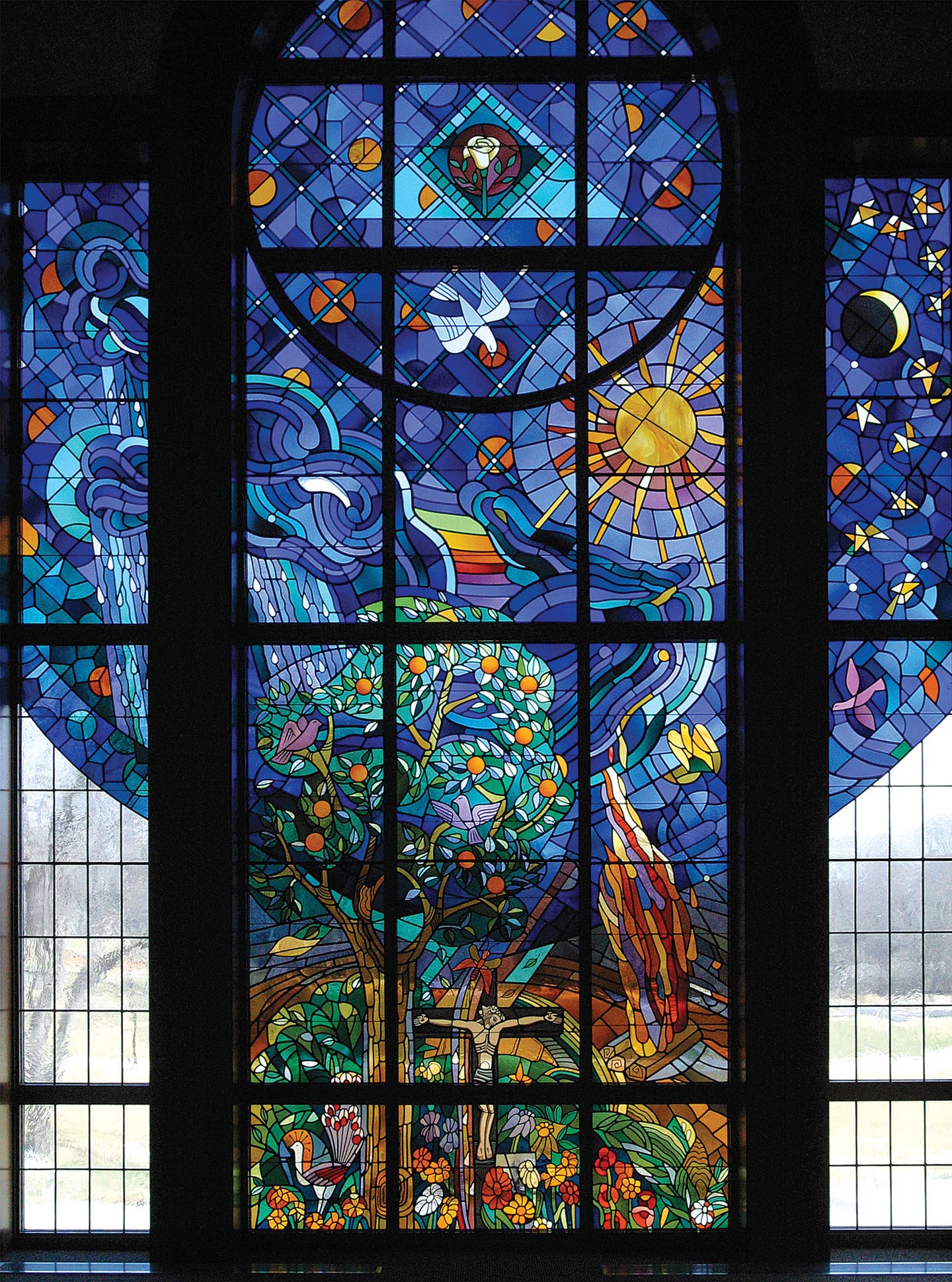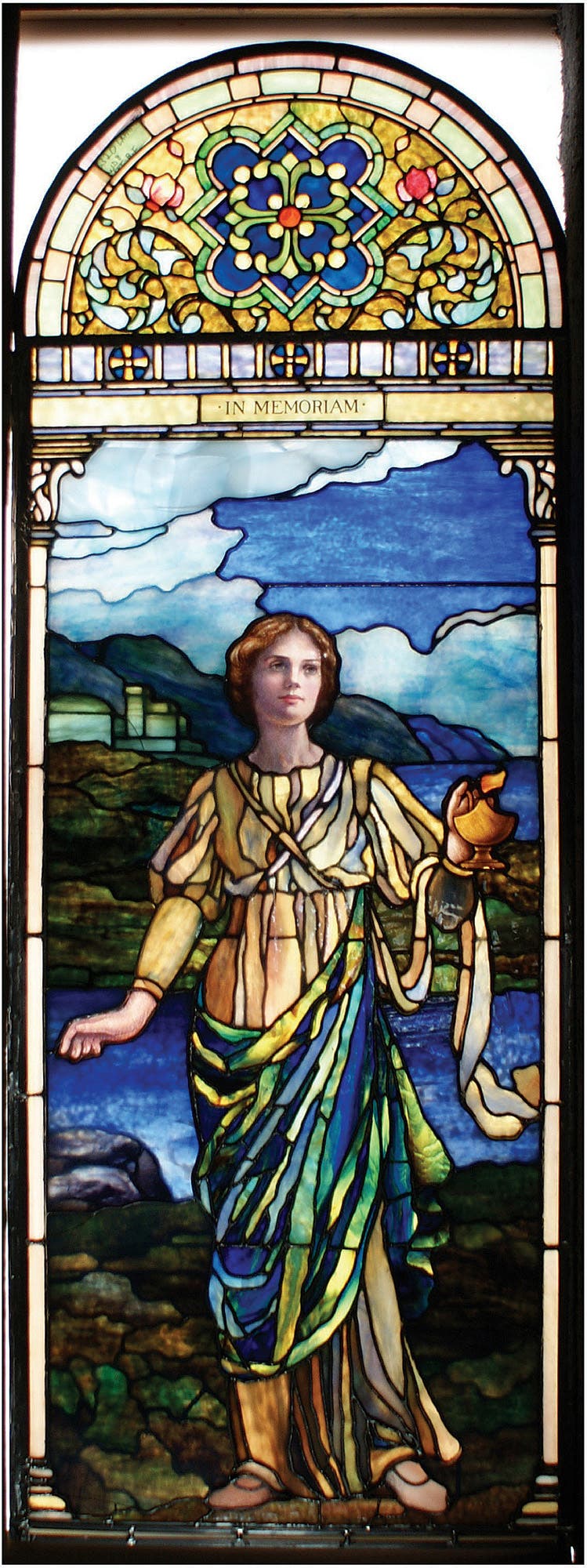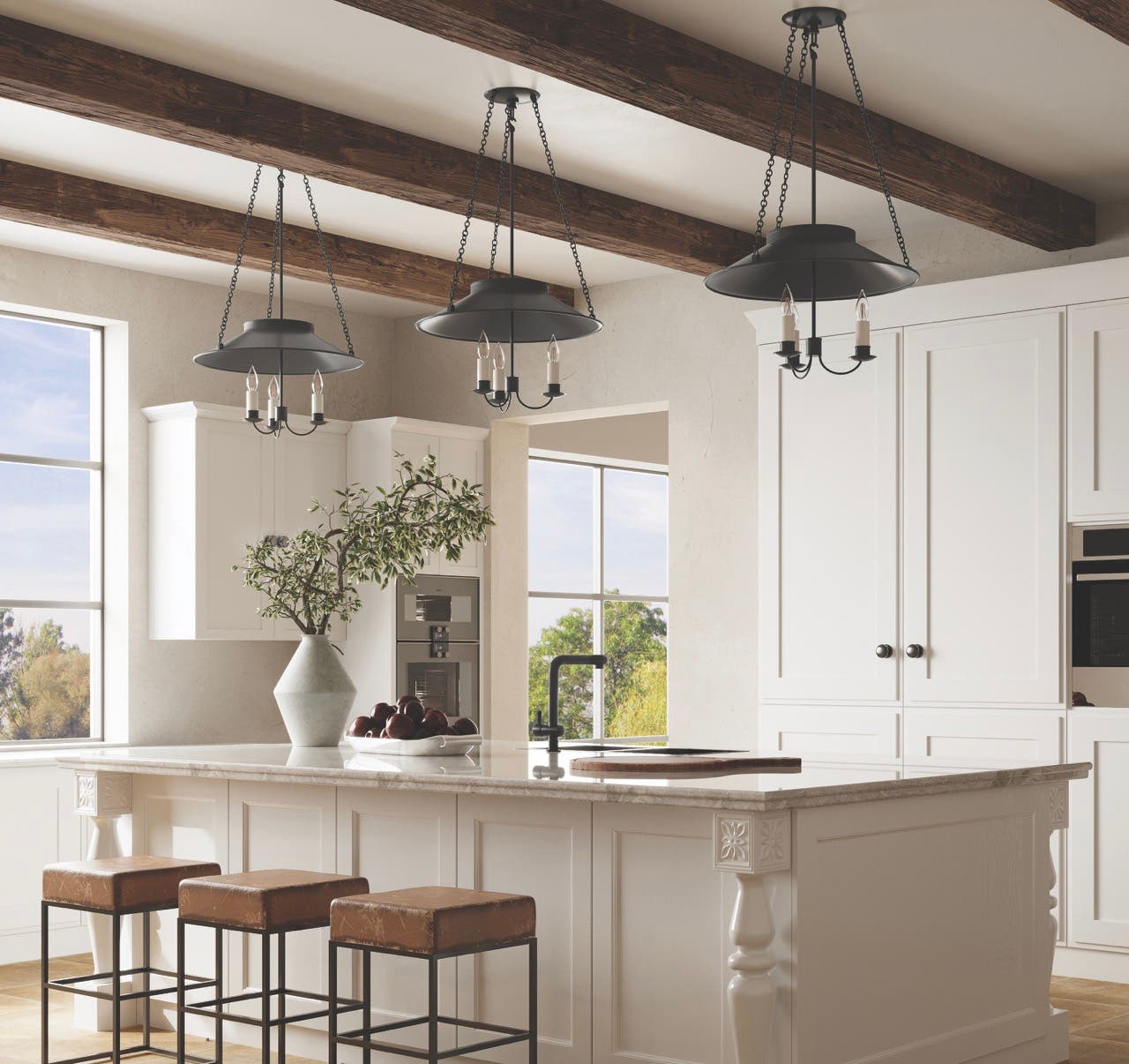
Product Reports
Designing and Restoring Historic Art Glass








Too Many Cooks Spoil the Look
All too often, clients hire contractors for every aspect of the project, which is a sure-fire way to make sure that things will not be done right or on time or both. “I’ve had clients hire one contractor for the window frame, one for the protective covering, one for the stained glass, plus a general contractor,” says Paul Conley, vice president, operations for Bovard Studio in Fairfield, IA. “This is seen as a way to save money, but what it does is create the opportunity for miscommunication and the chance to miss deadlines. If you hire a one-stop shop like ours, you eliminate the problem.” Bovard Studio, a specialist in ecclesiastical and public-building windows, was founded three decades ago by artist Ron Bovard. Based in Fairfield, IA, it has a 40,000-sq.ft. production area and 50 employees.
John Phillips, president and co-owner of Willet Hauser Architectural Glass in Winona, MN, says that collaborations can make the price – not to mention tempers – rise. “Too often, clients see us as a construction company,” he says. “We don’t do construction, we do art.” Willet Hauser has been in business for 116 years and has worked on projects at more than 20,000 churches and institutions.
General contractors, in general, present challenges for studios. “We prefer to work directly with the owner and be paid by the owner, and we try to get our work taken out of the general contract,” says Hans Rohlf, president of Rohlf’s Stained & Leaded Glass in Mount Vernon, NY. “General contractors do monthly requisitions, so we often have to wait 60 to 90 days to get our first payment. And they keep a 5 to 10% retainer that is not paid until the entire project is done, which often lasts far longer than our portion” In business for more than 90 years, Rohlf’s has 25 craftspeople in its 15,000-sq.ft. studio. It has completed high-profile projects, including the restoration of the Tiffany stained-glass clock at Grand Central Station in New York City.
The Committee, Unfortunately, Rules
The decisions in major projects – new and old – are made by committee, and many if not all of the members are volunteers. Reaching a unanimous decision often is time-consuming as well as frustrating. “In new projects, the committees have to decide on styles and subject matter as well as budget,” Rohlf says. “They always ask about cost first. We like to give the client a budget, either per window or per project, and see how the numbers fit. This helps us give the most bang for the buck. This way, if they don’t have enough money, they can start a fund-raising campaign or take donations window by window.”
Getting approval on the design is often the most difficult part of the job, says Martin V. Rambusch, co-owner and president of Rambusch Decorating Co., Jersey City, NJ. “Many people have no imagination and can’t understand scale, and when it is finished, they say, ‘I didn’t know it would look like this.'” A fourth-generation, family-run studio that was founded in 1898, Rambusch specializes in public interiors, church work and lighting fixtures.
Clients Don’t Read the Fine Print (or Even the Contract)
This is not as obvious as it sounds. “We do a lot of work for churches, which are staffed by volunteer boards,” says Conley. “They go through a bidding process that often involves several studios. Sometimes, they confuse things they have heard verbally from bidders and think they are written down and they aren’t.” He says that Bovard Studio always makes its staff available to review contracts before the work begins. “We want every project we do to be a positive experience,” he says.
The contract, Phillips says, isn’t the only thing the client doesn’t understand. “In church and institutional projects, there’s a committee and a bidding process, and there’s a lot of jargon that keeps the client from distinguishing one art-glass studio from another,” he says. He points out that the client isn’t really to blame: It’s up to the art-glass studio rep to communicate clearly. “People do not have experience working with art-glass studios because windows can last a century without needing work,” he says. “It’s a once-in-a-lifetime experience.”
Stained-Glass Consultants Add Their Two Cents
As if committees and scores of contractors are not enough to muddy the mix, many clients also hire stained-glass consultants. Conley says the consultants tend to work with a lot of smaller art-glass studios, and when they get a big project, they have to hire several studios to work on it, which goes back to too many cooks. “If you have a large project, you need a large studio that can do it all,” he says. “Consultants also have other projects going, so they can’t devote all their time to everyone. Again, clients do this because they think it saves money, but it doesn’t. ”
In fact, according to Rohlf, consultants can add 20 to 30% to the cost of the project. “They tend to over-specify because it makes it look like they are doing their job,” he says. “That raises the bill.” Rohlf says that consultants should be prohibited from bidding on the jobs they are paid to write specifications for because it creates a conflict of interest.
There are times when stained-glass consultants can be helpful, he says, especially when there is no architect on the project. Liturgical consultants, who have a vast knowledge of scripture, are welcome on new projects because they can speed the process. “They can push the committee to make a decision on design and style,” he says.
It Doesn’t Happen Overnight
Because many public projects are by bid and decided by committee, it takes a while for the money to be allocated. Roberto Rosa, an owner of Serpentino Stained Glass Studio in Needham, MA, says that clients sometimes have unrealistic expectations about timetables. “Restoration is delicate, tedious work,” he says, “and some clients only want to give us a small window of opportunity to complete the project.” Established in 1968, this small studio has eight longtime staff members and a 5,000-sq.ft. work space. It specializes in restoring windows for churches, universities and museums, and has done work for a variety of high-profile buildings, such as Trinity Church in Boston and the Hall of Flags in the Massachusetts State House.
Conley agrees, adding that clients don’t always realize that a window that is more than a century old could present new problems once work begins. “Replacement parts and repairs can be time-consuming,” he says. “Some pieces have to be custom made; this is an old craft, and it’s done by hand. You have to have time to do it right.”
Phillips puts it more succinctly: “It’s not like ordering a Pella window. This is custom work that could take six to eight months. There’s nothing by the catalog about this.”
You Have To Work Around Us
Art-glass studios that work in churches or public places are required to keep a low profile so the building can function while the work is going on. But not every client understands the extent of the disruptions.
“Yes, we can accommodate a funeral, but you can’t expect to do three to four masses a day and have board meetings at night,” Conley says. “These windows are old, and sometimes there are surprises that require building alterations.”
Let The Craftsmen Visit the Site
Too often, in a bid to save money, clients want the art-glass craftsman to design a new piece without visiting the site. “We only need a couple of days on site,” Conley says. “The visits are invaluable and in the end, they save time. If we don’t go, we can spend weeks and even months trying to get it right. And seeing the environment leads us to come up with a better design. If it’s a new building, we would like to talk to the architect and work together on the project.”
Rosa says that this is a recurring issue when it comes to restoring historic art glass. “There are studios that send salesmen around the country who tell churches their windows are in dire need of restoration even when this is not the case,” he says. “Sometimes, the church doesn’t even realize that the studio is out of town. I always visit the site personally and make a report so we can build a relationship with the client. We encourage people to visit our studio so they can appreciate when we do.”
So convinced is Willet Hauser Architectural Glass of the importance of studio visits that it pays for serious prospective clients to come. “We cover the costs for whatever is fair for the size of the project,” Phillips says. “It’s important to meet the people who create the windows so you can understand the process and determine whether you want to work with them.”
Get Involved from the Get-Go
Art-glass windows define the interior and exterior of a building, yet many clients do not involve the studios until the project is nearing completion. The reason? “You don’t need stained-glass windows to preach,” Rohlf says. “Windows are the first thing to be eliminated in the budget.”In the most successful projects, architects and art-glass studios work together to present a comprehensive and cohesive design to the client. This collaboration, Phillips says, is important not only for the design but also for the bottom line. “Clients – and even architects and designers – tend to be unrealistic about budgets,” he says. “Many of these projects involve fund-raisers, so it’s better to involve us from the beginning. Even if you can’t raise all the money before the project starts, you can plan it so you can install the proper framing and add the appropriate windows at a later date.” Rambusch says that it is crucial to make a program so that when “clients cannot do all the work at once, there is design unity.”Philllips recalls a new church that was built in the Southwest by a leading architectural firm where the windows chosen left a gaping hole in the design. “The architect had created intricate framing for the windows that accented the lines of the building, but all the committee could see was price, price, price even though this was a $7-million building,” he says. “They changed the framing configuration and installed inexpensive artwork windows at 30% of the price we bid. The windows changed the appearance of the church and made it the laughingstock of the area. The 600 people in the congregation had to suffer because of a decision made by three to four people.”
Do Not Judge by Price Alone
The lowest bidder isn’t necessarily the best one, but it’s always the most tempting to choose regardless of the size of the budget. “Government work is particularly difficult because it’s mandated to take the lowest bid, and many of the bidders don’t bid to the bid document,” Rambusch says. “And they still get the job.”
Do Your Homework
The art-glass experts emphasized that the best client is an educated one. “It’s up to the craftsperson and the designer to educate the client and walk them through the steps,” Rambusch says. “Many times, they do not understand terms like ‘cartoon,’ which does not refer to something that is animated and funny. We go through everything step by step, and give them homework so they understand.”
Although the studios school clients on site, they say additional research is required. Andreas Lehmann, owner of Lehmann Glass Studio in Oakland, CA, says giving the client information about the process is key to a successful project because the craft he practices – reproduction of Victorian brilliant wheel-cut glass – is so rare that it is virtually unknown. “I have to make sure people understand the terminology,” he says. “People get confused and think I do etching. If they have heard of brilliant wheel-cut glass, they think it only can be done on goblets. But it has a much wider application – on windows, doors and architectural panels.” Lehmann apprenticed for three years in Germany before setting up his studio in 1984.
Phillips says that regardless of the type of glass, the client should make an informed decision. “Do your homework on the studios you are considering and get a Dun & Bradstreet report on their finances,” he says. “Ask what projects the studio is working on now, not what it has done in the past.”
Morgantown, WV
Media, PA
Fairfield, IA
New Berlin, WI
Davenport, IA
Fredericksburg, TX
Jacksonville, IL
North Arlington, NJ
Oakland, CA
Oconomowoc, WI
Jersey City, NJ
Mt. Vernon, NY
Needham, MA
Winona, MN








